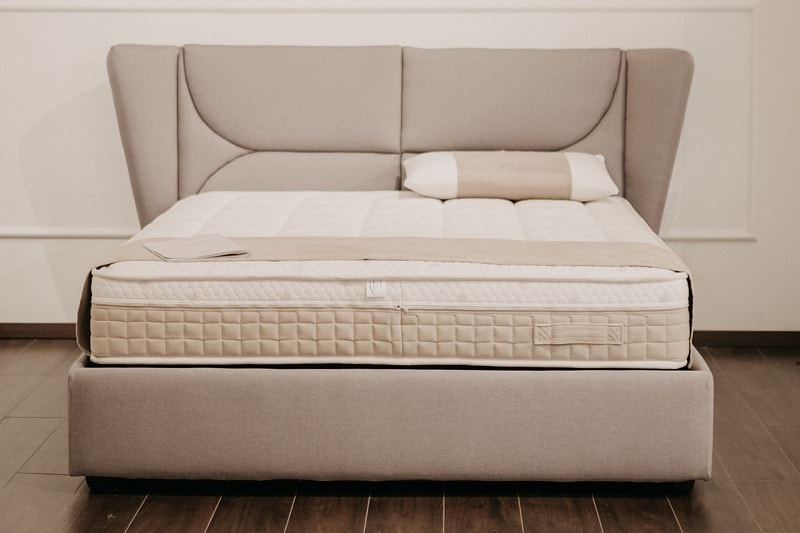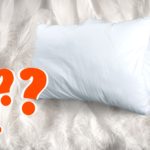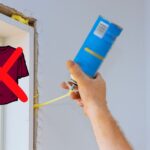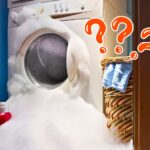When you rest your head on your pillow at night, you probably don’t want to be lying among thousands of dust mite carcasses. Even though memory foam retains fewer germs, it’s still important to keep your memory foam pillow fresh.
Memory foam pillows can’t be machine-washed or tumble-dried, since they’re sensitive to tearing. Instead, hand-wash your memory foam pillow in a basin with washing-up liquid or laundry detergent, then let it air-dry. The pillow covers should be machine washable, though.
I’ll now provide thorough instructions on caring for your memory foam pillow, alongside answering some typical pillow-related questions. Let’s get into the pillow talk!
A Guide to Washing Your Memory Foam Pillow
Here’s a no-fluff guide to keeping your memory foam pillow both clean and intact. Just follow these simple steps and tips!
Don’t machine wash or dry!
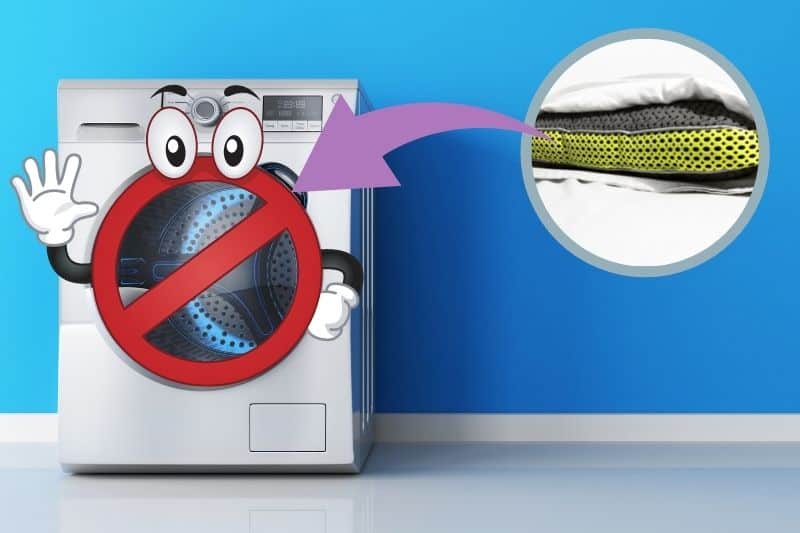
Memory foam is a matrix of spongy material that needs to stay undamaged to keep providing that slow-rise effect. Therefore, it’s important to treat your pillow gently!
Memory foam can’t handle being tossed about in the washing machine or tumble dryer, even on the lowest settings. The foam bubbles within the pillow will be broken by harsh movement, leaving your pillow deformed and flatter.
This doesn’t mean that your pillow cover isn’t machine-washable, but it depends on whether the cover is waterproof or not. Unless your pillow is in a shredded foam style, you should wash the pillow and cover it separately.
Determine how dirty your pillow is
Check your pillow’s condition to see how much cleaning it requires. If there’s a spill or crumbs on your pillow, it might not need a deep clean. A sweaty smell can also be lifted without deep cleaning your pillow.
The cells within memory foam are designed to retain air, but they will also retain water if the pillow is soaked.
Consequently, they take a long time to dry, and the process can’t be sped up by the tumble dryer. If you can avoid deep cleaning your pillow, I’d recommend using a different method.
I’ll list various cleaning methods below, depending on your requirements.
Cleaning a crumby or dusty pillow
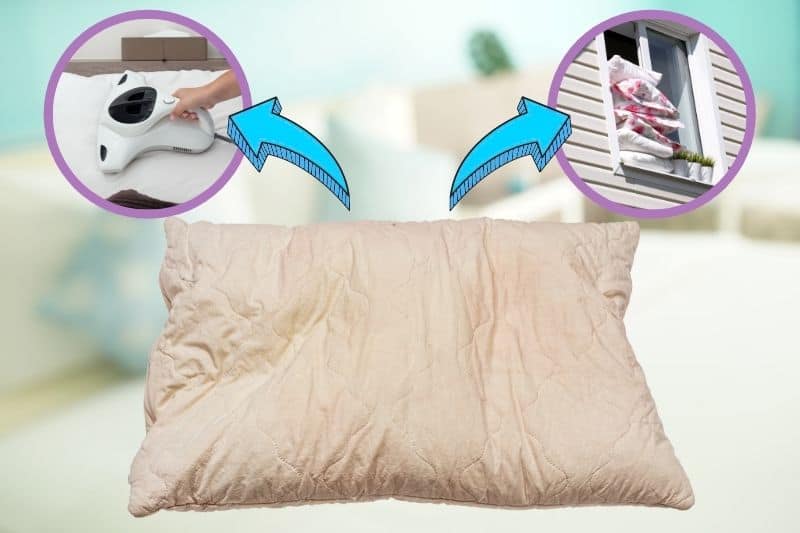
Your pillow might not need water to be spruced up.
If your pillow has crumbs, dust, or animal hair on it, try vacuuming its surface with your vacuum’s upholstery attachment. That’s the wide attachment, usually with a fabric strip lining the base, great for trapping detritus and making the suction gentler.
You could also leave it outside in the sun for a couple of hours. The sun’s UV rays are a natural disinfectant, and the pillow’s foam cells will absorb the fresh outdoor air.
Cleaning a sweaty pillow
Your head naturally sweats at night, especially during the summer, when you can sweat litres overnight. Letting sweat soak into your pillow will lead to a sweaty scent as bacteria grow, which isn’t what you want to smell before drifting off to sleep.
You can use the sun’s purifying power to get rid of pillow sweat, alongside some bicarbonate of soda.
Sprinkle some bicarbonate of soda on one side of your memory foam pillow, then leave it to bake outside in the sun for a couple of hours. Next, use your vacuum’s upholstery attachment to remove the leftover powder.
Flip your pillow over, then repeat the steps on the other side for a wholly refreshed pillow. However, if your pillow has a big sweat build-up, you might need to deep clean it.
Cleaning a stained pillow
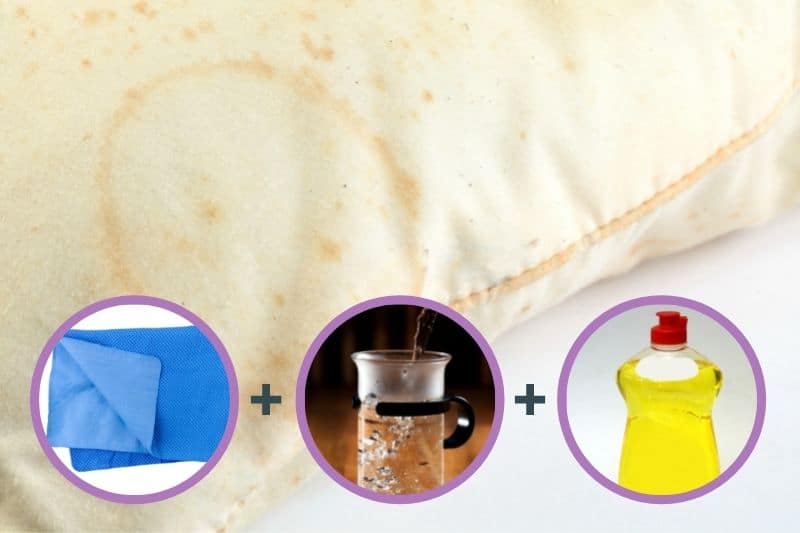
If your pillow has a recent spill or stain, you might get away with spot-cleaning it.
First, grab a clean, dry cloth or rag and blot the stained area of your pillow. Then, combine warm water and washing-up liquid in a bowl, and soak the cloth. Wring out the cloth until it’s damp, then rub it over the stain using a careful circular motion.
Rub the affected area until the stain is lifted. Use another dry cloth to absorb leftover water from your pillow, then leave the pillow to air dry in the sun until any moisture is gone.
Deep cleaning a memory foam pillow
Sometimes, nothing but a deep clean will do. Deep cleaning your memory foam pillow isn’t difficult, but it’ll probably take over 24 hours to dry, so you should have a backup pillow ready.
First, fill a big tub or sink with cold water. Next, mix in a few dashes of washing-up liquid or weak laundry detergent. Soak your pillow thoroughly in soapy water, gently squeezing the body of the pillow.
When your pillow’s looking refreshed, drain the soapy water and refill the tub with cold tap water. Keep gently squeezing the pillow to remove the soap and dirty water from within. Drain and refill as necessary until the water runs clear.
Drain the water from the tub and continue to gently squeeze the pillow, removing as much water as possible without wringing it or being too rough. Lay your pillow out flat on a dry towel and squeeze it further, flipping it over several times.
Finally, place it on another dry towel in a sunny area. It should air dry until no moisture remains; this will likely take one or two days.
Enjoy your rejuvenated pillow!
How Often Does a Memory Foam Pillow Need Deep Cleaning?

Memory foam pillows are meant to last between 2-3 years, but they need maintenance.
You can get the most out of your pillow’s lifespan by gently deep cleaning it once every two months, and letting it bake in the sun weekly.
How Can You Tell if a Memory Foam Pillow Is Worn Out?
Most people buy memory foam pillows for their slow spring back effect, which is beneficial for joint pain.
If your pillow is flat and no longer returns to its original shape, it’s time to bin it.
Although, it’s worth noting that memory foam is affected by temperature. If it’s very cold, the foam may harden and become uncomfortable. Try warming your pillow before giving up on it.
How Do You Wash Memory Foam Pillow Covers?
Standard pillow covers
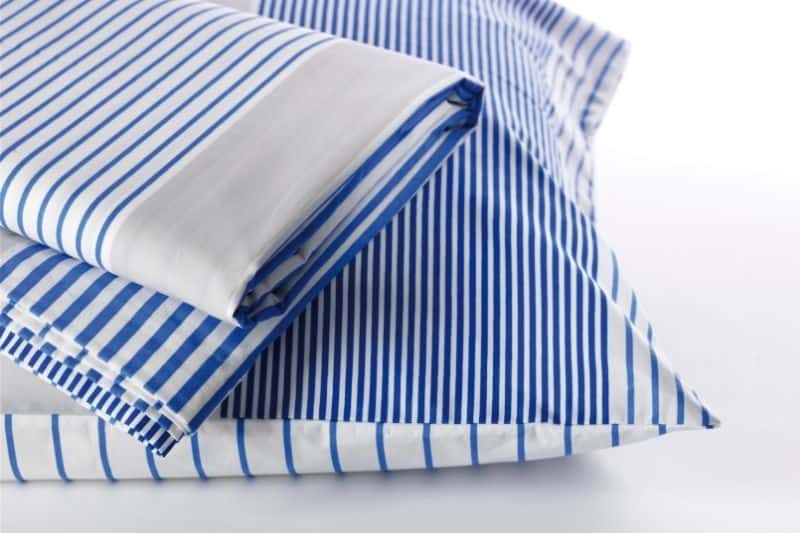
Most covers provided with memory foam pillows are made from cotton or poly-blends and can be machine washed and tumble dried separately from the pillow.
Use a low temperature to avoid shrinking your case and check the care instructions on the cover’s label before washing.
Waterproof pillow covers
To prolong your pillow’s condition, you should use a waterproof, hypoallergenic pillow cover, which protects the spongy material from being penetrated by sweat and germs.
Once your pillow has been infiltrated by dirt, it’s difficult to remove all of it, even with deep cleaning.
Waterproof pillow covers can typically be machine washed using a cold, gentle cycle with mild laundry powder or detergent.
They should be tumble-dried on a similar soft cool cycle, without fabric conditioner. Waterproof pillow covers are damaged by heat, so don’t iron or dry-clean them!
Here are a couple of recommendations for waterproof, hypoallergenic covers for your memory foam pillow.
Waterproof Coolmax Standard Pillow Protector Pair
These cool luxury pillow covers come with glowing reviews, and they’ll keep your memory foam pillow safe from dirt and liquid.
Customers commend their soft feel and cooling properties, and most are pleasantly surprised by the quality of their waterproof design.
Check out the current price and reviews on Soak and Sleep.
Utopia Bedding Waterproof Pillow Protectors
For waterproof pillowcases on a budget, try these Utopia pillowcases.
They’re Amazon’s Choice for waterproof pillowcases, and the reviews are mostly positive, praising their liquid resistance and ease of use. However, a minority of reviewers found them too crackly or synthetic-feeling.
Check out these pillow covers on Amazon.co.uk.
Conclusion
Memory foam pillows must be hand-washed to retain their slow-rising properties, but you can freshen up your pillow by letting it air-dry under the sun’s disinfecting rays for a couple of hours.
You can spot-clean your pillow with a damp, soapy cloth, or deep clean it by submerging it in a basin of cold soapy water.
Your pillow’s case can be machine washed and tumble dried separately, but you should use a cool, gentle cycle without bleach or fabric conditioner. Use a waterproof, hypoallergenic pillow protector to keep your pillow healthy and expand its lifespan.

A recent uni graduate who likes writing, gaming, and drawing. I’m figuring out housekeeping tips alongside you while trying to provide eco-friendly cleaning options. Let’s find out how to use a tumble dryer together!
